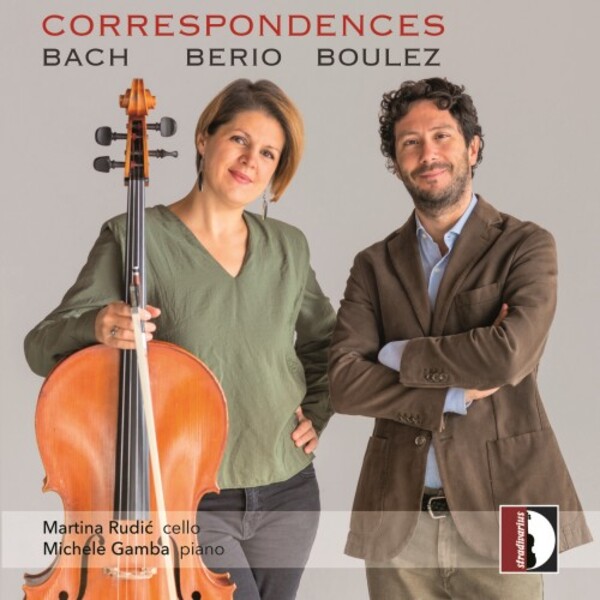
Correspondences: JS Bach, Berio, Boulez
£15.15
In stock - available for despatch within 1 working day
Despatch Information
This despatch estimate is based on information from both our own stock and the UK supplier's stock.
If ordering multiple items, we will aim to send everything together so the longest despatch estimate will apply to the complete order.
If you would rather receive certain items more quickly, please place them on a separate order.
If any unexpected delays occur, we will keep you informed of progress via email and not allow other items on the order to be held up.
If you would prefer to receive everything together regardless of any delay, please let us know via email.
Pre-orders will be despatched as close as possible to the release date.
Label: Stradivarius
Cat No: STR37215
Format: CD
Number of Discs: 1
Release Date: 4th March 2022
Contents
Works
Viola da Gamba Sonata in D major, BWV1028Viola da Gamba Sonata in G major, BWV1027
Viola da Gamba Sonata in G minor, BWV1029
Sequenza XIV
Notations (12) for piano
Artists
Martina Rudic (cello)Michele Gamba (piano)
Works
Viola da Gamba Sonata in D major, BWV1028Viola da Gamba Sonata in G major, BWV1027
Viola da Gamba Sonata in G minor, BWV1029
Sequenza XIV
Notations (12) for piano
Artists
Martina Rudic (cello)Michele Gamba (piano)
About
‘Martina and I share a deep enthusiasm for new music and we are always eager to find the common roots of composers who have been a constant part of our development as musicians, going right back to our school years.
‘What have Berio and Boulez in common with Bach? Firstly, polyphony. The Bach Sonatas, played here on piano and cello, are in fact “Sonate a 3”, in which the use of different timbres and rhythms goes along with the Bach’s mastery of counterpoint and the sheer inventiveness of the musical motifs.
‘We find that these elements of the composer’s creativity are also very present in the music of Berio and Boulez. In Berio’s Sequenza for cello, the exploration of the idea of polyphony on a monodic instrument, the variety of atmosphere and the pure technical virtuosity find their roots in Bach’s music.
‘Boulez, with his Douze Notations for piano, pays a huge debt to the old German tradition of counterpoint, filtered through the twelve-tone system of Schoenberg. Boulez clearly stated that he wanted to make fun of the Second Viennese School, and yet the character of each piece and the virtuosity of each tiny nuance recall Bach’s heritage, in particular his rhythmic precision and the effective way that the different ‘voices’ can be heard.
‘These ideas have encouraged us to offer listeners some fascinating parallels between centuries which can seem so far from one another. We hope that re-building these bridges in our own time might help to maintain dialogues and echoes of the history of our common cultural patrimony.’
Error on this page? Let us know here
Need more information on this product? Click here